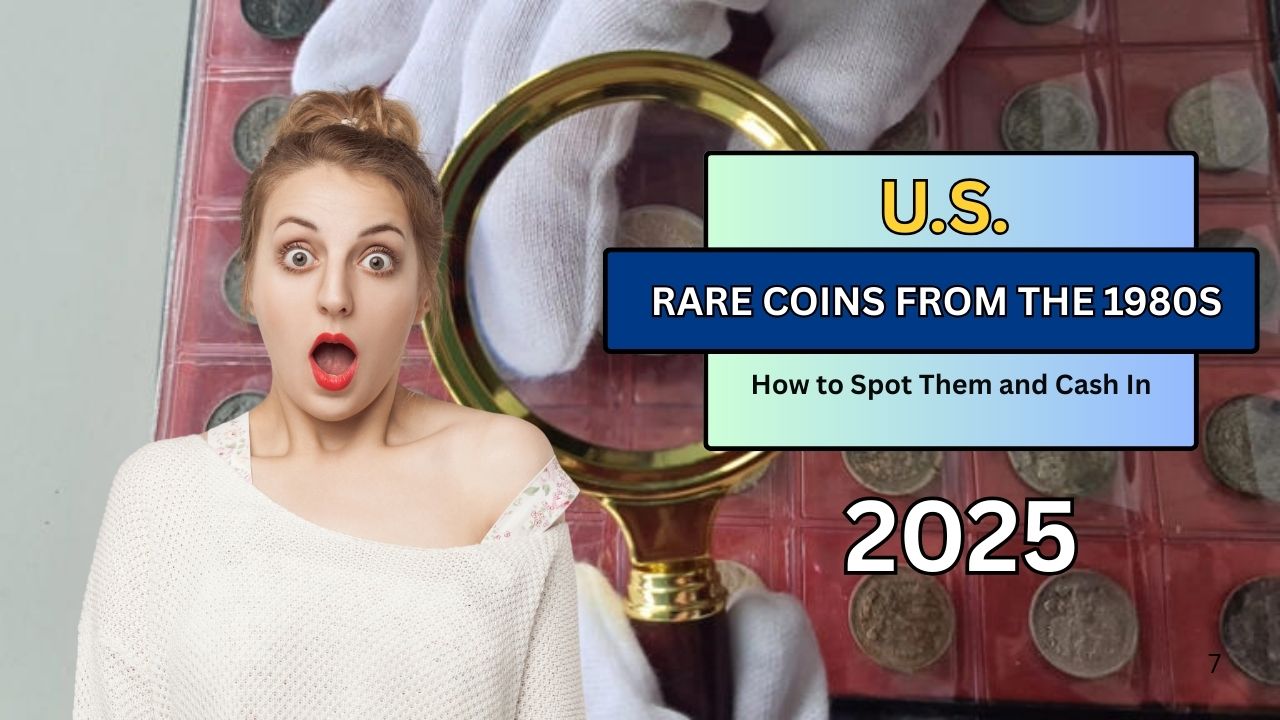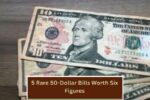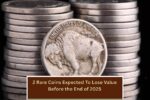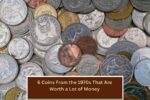The 1980s was a fascinating time for coin collectors, as the U.S. Mint experimented with new designs and materials while also producing several coins with unique errors.
While many coins from this era are still in circulation and worth only their face value, there are a few exceptional ones that have become highly sought after by collectors.
These rare coins, often due to minting errors or material changes, hold significant value, with some fetching thousands of dollars. Below are four rare coins from the 1980s that every serious collector should know about.
1. 1982 Copper Lincoln Cent
The 1982 Lincoln cent is famous for its unique transition from copper to a zinc alloy. This was done to reduce production costs, as copper prices were rising. However, during the transition, some coins were still struck in copper, making these copper versions rare and highly valuable.
Why It’s Rare:
The majority of 1982 pennies were made of zinc, but a small portion was still struck using the old copper composition. This mistake in the metal mix has led to the copper version being highly prized by collectors.
Value:
The 1982 copper penny can be worth up to $1,000 or more, especially in mint state (MS-65 or higher). The value increases depending on the coin’s condition and how well it has been preserved.
Identification:
One way to distinguish the copper 1982 penny from the zinc version is by weight. The copper version weighs about 3.11 grams, while the zinc version weighs 2.5 grams. Additionally, you can identify the copper coin by its reddish-brown color, while the zinc version will have a more silvery appearance.
For more details on this coin, visit PCGS – Professional Coin Grading Service.
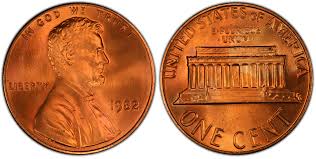
2. 1983 Doubled Die Reverse Lincoln Cent
The 1983 Lincoln cent also stands out due to a unique minting error. Some of the coins struck in 1983 have a doubled die reverse, meaning the design on the reverse side of the coin is unintentionally doubled. This error occurred when the die used to strike the coin was misaligned, causing a noticeable doubling of the letters and numbers on the reverse.
Why It’s Rare:
This doubled die error is uncommon and makes the 1983 penny with this feature highly desirable among collectors. Not all 1983 pennies have the error, which further increases the rarity.
Value:
Depending on the condition, this coin can be worth anywhere from $300 to $2,000. The most valuable examples are those with clear and well-defined doubling, particularly those graded MS-65 or higher.
Identification:
To identify a 1983 doubled die reverse penny, look for doubled inscriptions, particularly around the phrase “E Pluribus Unum” on the reverse. A magnifying glass or a jeweler’s loupe will help reveal the error.
For additional information, check out NGC – Numismatic Guaranty Corporation.
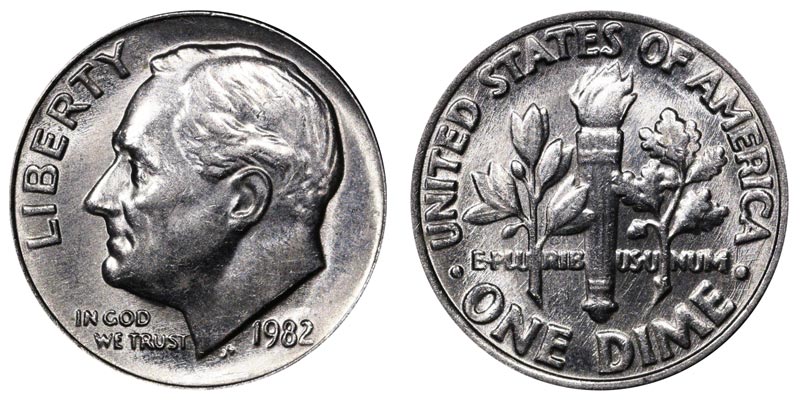
3. 1984 No Mint Mark Jefferson Nickel
Another rare coin from the 1980s is the 1984 Jefferson nickel with no mint mark. Most of the 1984 nickels were struck at the Philadelphia Mint, and these coins usually have a “P” mint mark to indicate where they were minted. However, a small number of 1984 nickels were produced without the mint mark, making them an unusual find.
Why It’s Rare:
This omission was not intentional, making the 1984 No Mint Mark Jefferson nickel a rare collector’s item. Most coins from this era should have a mint mark, so finding one without it adds to its intrigue and value.
Value:
A 1984 Jefferson nickel without a mint mark can be worth anywhere from $500 to $1,500 depending on its grade and condition. Coins in mint state condition tend to fetch the highest prices.
Identification:
To identify this rare coin, look for the absence of a mint mark on the reverse of the coin, just above the word “Monticello.” If you find one, you may have a valuable piece in your hands.
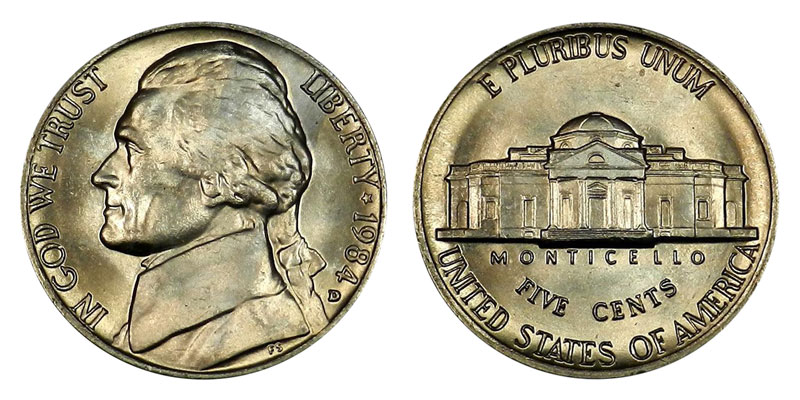
4. 1989-S Proof Lincoln Cent (Off-Center Error)
One of the most striking errors to appear on coins from the 1980s is the off-center strike on certain 1989-S Proof Lincoln cents. These coins were struck off-center, meaning that the design is partially missing or misaligned, which creates a unique look.
Why It’s Rare:
Off-center coins are generally considered errors, and they are highly prized for their unique appearance. This particular error, combined with the 1989-S proof status, makes the coin an even rarer find.
Value:
Depending on the degree of misalignment and the coin’s condition, a 1989-S proof Lincoln cent with an off-center error can be worth anywhere from $300 to $2,000 or more.
Identification:
Examine the coin closely for a noticeable off-center strike, where part of the design is cut off due to the die being misaligned when the coin was struck.
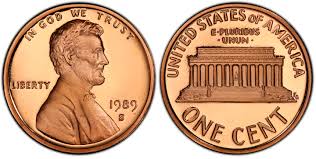
Conclusion
The 1980s produced several coins that continue to captivate collectors due to their unique qualities, whether it’s a rare minting error or a change in material. Whether you’re a seasoned coin collector or just starting, these four rare coins are ones to look out for. If you happen to find one of these coins in your pocket change, it’s worth getting it professionally graded to assess its true value.
For more information about rare coins and to stay updated on new discoveries, visit trusted numismatic websites such as PCGS or NGC.
This article has been carefully fact-checked by our editorial team to ensure accuracy and eliminate any misleading information. We are committed to maintaining the highest standards of integrity in our content.

Deepak Grover is a dedicated content writer at OTE News, specializing in government affairs, public policy, and current events. With a keen eye for detail and a passion for factual reporting, he ensures readers receive accurate and insightful news. Deepak holds a degree in Political Science and has experience in research-driven journalism.
When not writing, he enjoys reading historical books, exploring hiking trails, and staying updated with global political trends. His commitment to ethical journalism makes him a trusted voice at OTE News.

